THEN AND NOW: How Burger King has changed through the years
Erin McDowell

- In 1953, the very first Burger King restaurant opened its doors.
- Four years later, the chain released its most iconic menu item to date, the Whopper, which is still a menu staple today.
- From the removal and subsequent return of the chain's "creepy" mascot to the introduction of internet cafés, Burger King has evolved a lot over the years.
Burger King is the second-largest fast-food burger chain in the world, and it isn't for lack of trying.
Ever since the first Insta-Burger King opened its doors in Jacksonville, Florida, in 1953, the chain has been serving up signature flame-broiled burgers, milkshakes, and fries that have satisfied customers all over the globe.
We took a look back at how the chain has evolved over the years, from mascot and menu changes to restaurant redesigns and the chain's reaction to the coronavirus pandemic.
Here's how Burger King has changed since its beginnings in the 1950s.
The first Burger King restaurant opened in 1953. Back then, it was called Insta-Burger King.
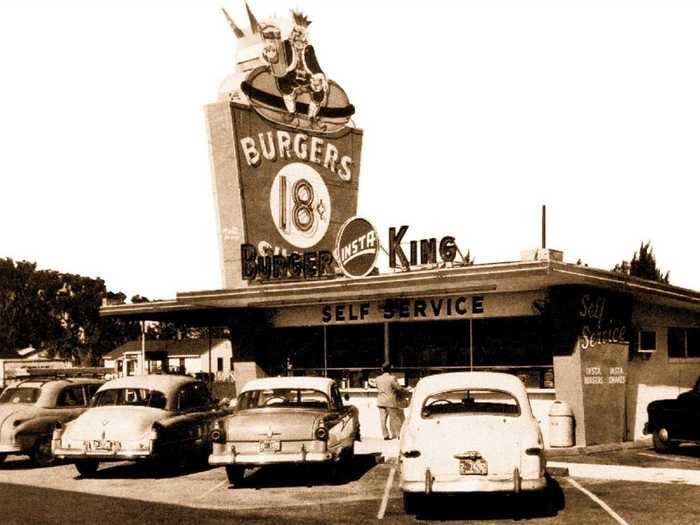
Founded in Jacksonville, Florida, by Keith Kramer and Matthew Burns, the company was taken over in 1954 by David Edgerton and James McLamore. They decided to expand its locations.
In 1967, Burger King was purchased by the Pillsbury Company. At the time of the purchase, Burger King had 274 restaurants across the United States and was worth an estimated $18 million.
It was the second-largest fast-food chain in the country, behind McDonald's.
Today, Burger King has 17,796 locations worldwide.

However, just like when Burger King first opened, the chain falls short of McDonald's, which has more than 38,000 locations across the globe.
An early version of the Burger King logo featured curved letters sandwiched between two yellow burger buns.
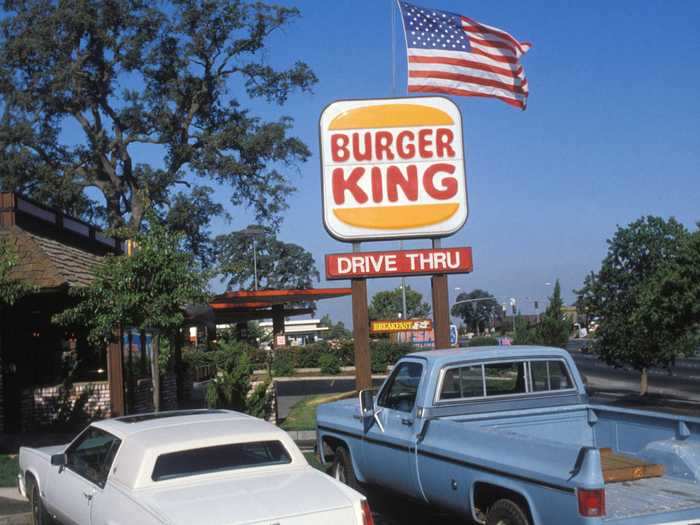
Other versions included images of the Burger King, the chain's mascot at the time.
Burger King's current logo has remained the same since its introduction in 1998.
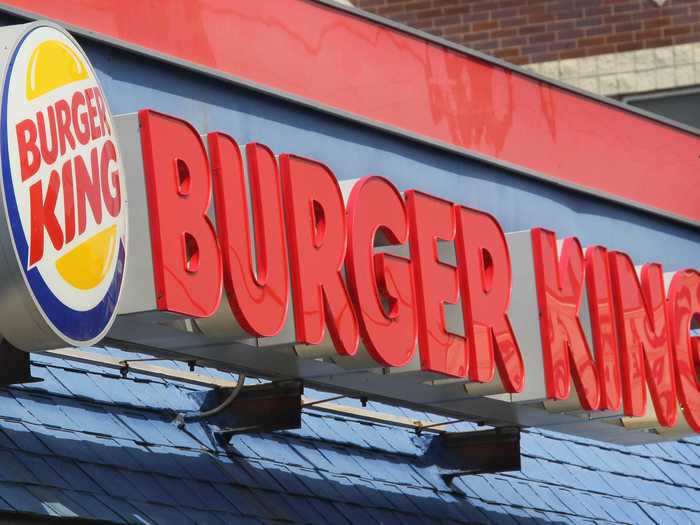
The logo includes a similar motif of the red Burger King name sandwiched between two yellow buns but also features a blue swirl around it.
Burger King grew in popularity due to its quick-service model.
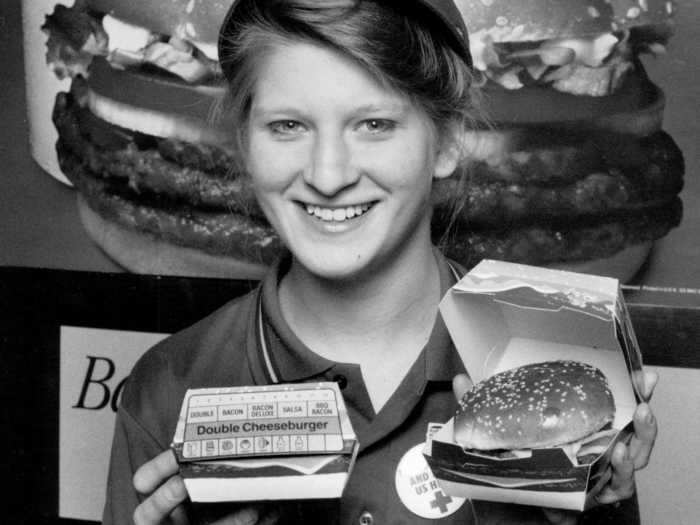
Early stores made use of a device called an "Insta-Broiler." The machine cooked burgers extremely quickly and was required to be used in all Burger King restaurants in the 1950s.
In 1957, Burger King released its signature burger, the Whopper, which is still around today.
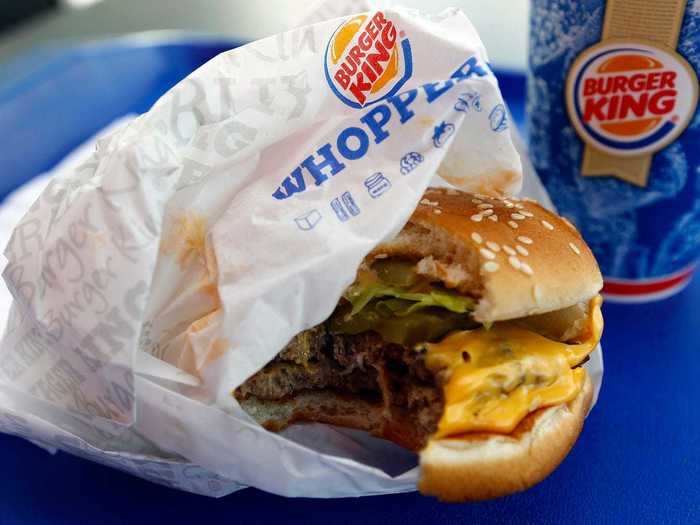
The Whopper was 37 cents compared to Burger King's original burger, which cost 18 cents. The Whopper came with sauce, cheese, lettuce, pickles, and tomato, all piled on top of a larger patty.
Today, Burger King still broils and flame-grills its burgers.
Pillsbury executive Norman Brinker brought great success to Burger King and notably started what's now known as the "Burger Wars."

Brinker wanted Burger King to overcome its biggest competition, McDonald's, in both sales and product quality.
In the late 1970s, Brinker started what would come to be known as the "Burger Wars" when a Burger King ad called McDonald's out by name and claimed that the chain's burgers were smaller.
McDonald's tried to sue the company, but sales began to take off.
From the 1960s to the 1980s, the Burger King mascot was a cartoon king. In 2004, Burger King revealed its new mascot, "The King."
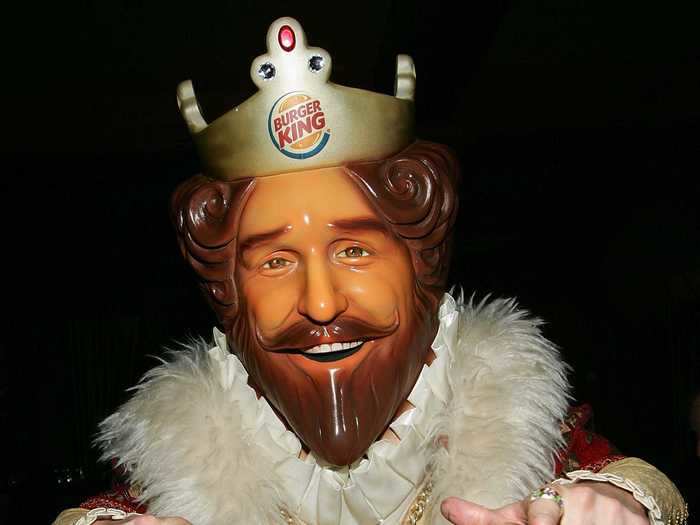
The mascot became known for his plastic, smiling head. The head was originally used in the 1970s as an inspiration for the drawn character. After it was restored, the head would become an iconic symbol for the brand.
The King appeared in his first commercial in 2004. In the ad, he woke up next to a man in bed before handing him a breakfast sandwich.
The character was pulled from Burger King ads in 2011 after complaints that the king was "creepy."
"People want a reason to go back to Burger King … There are no plans to bring the King back anytime soon," Alex Macedo, then senior vice president of marketing, told USA Today, according to Forbes.
However, in 2015, the King was back on his throne.
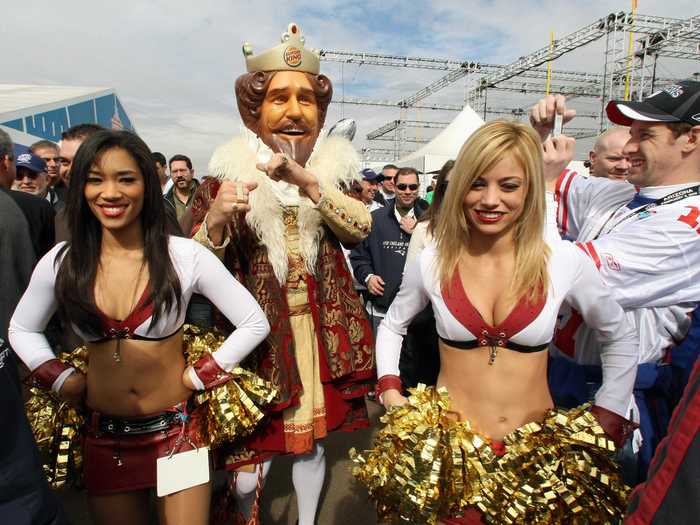
The conversation around Burger King increased 1,343% on May 3, the day of the fight, compared to the previous day, according to Adweek's Lost Remote.
However, publicity was largely negative due to the fact that Mayweather had pleaded guilty to domestic abuse charges and had spent time in jail.
Burger King has since focused its advertisements on showcasing its food's high-quality ingredients with no preservatives added.
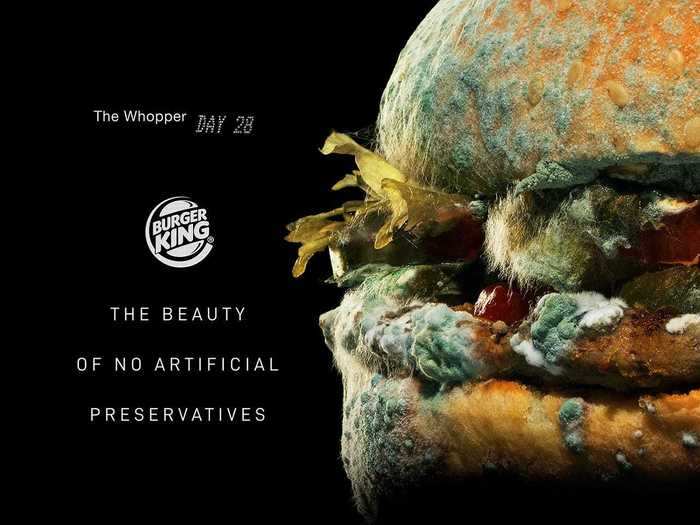
This 2020 ad shows a Whopper decomposing and molding over a 28-day period, intending to show that Burger King food is "real" and free of artificial preservatives. The video has 2.1 million views on YouTube as of July 14, 2020.
"At Burger King we believe that real food tastes better," Fernando Machado, Restaurant Brands International's chief marketing officer, said in a press release. "That's why we are working hard to remove preservatives, colors, and flavors from artificial sources from the food we serve in all countries around the world."
In the 1980s, Burger King began to see a decline in sales.
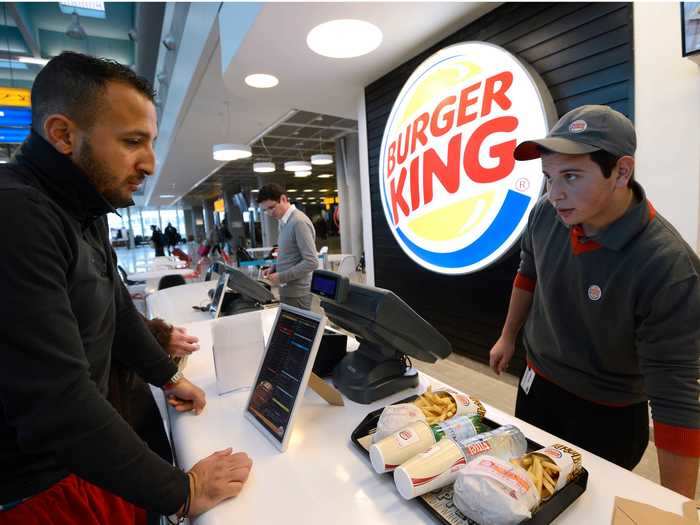
After Brinker left the company to start his own restaurant, sales declined.
However, when Burger King made the switch from Pepsi-Cola products to Coca-Cola, sales began to rise.
Burger King also attempted to attract new customers with a larger menu that included chicken and fish sandwiches.
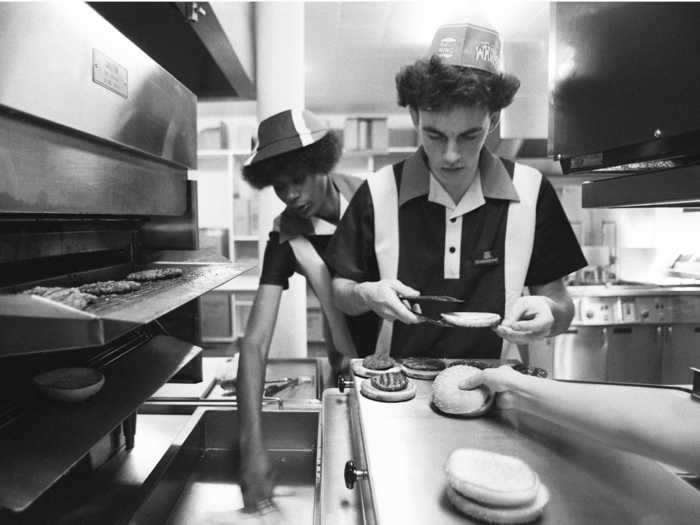
In 1979, former McDonald's executive Donald N. Smith introduced the new menu items as well as signature burgers in a strategy to target older customers who were willing to spend a little more on quality food.
The plan worked and sales rose by 15%.
Since then, Burger King has continued to add new and exciting items to its menus.
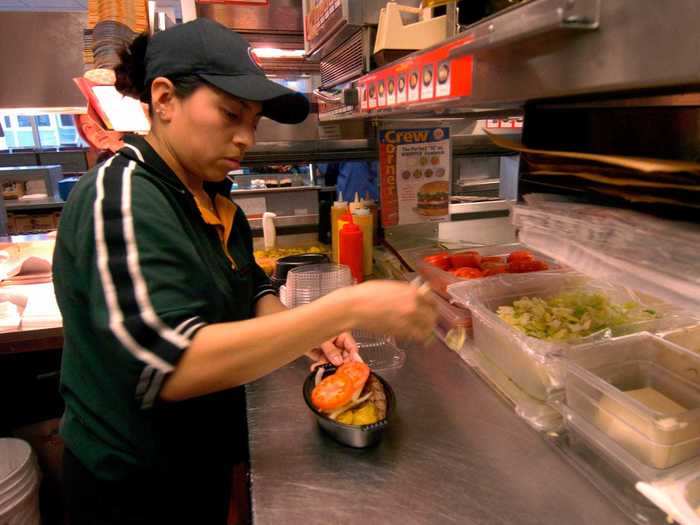
In 2004, the chain advertised a "low-carb" version of its Whopper, which meant taking away the bun.
In 1978, Smith began testing breakfast items.
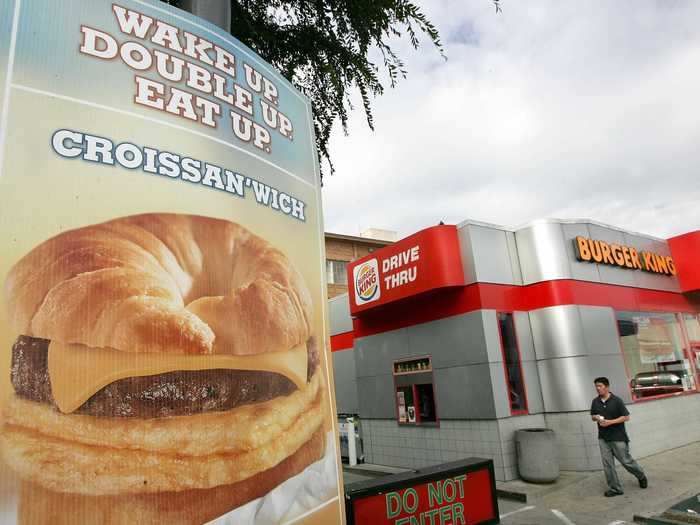
The chain originally ran into problems with its flame broilers. While they could easily cook burgers, it was harder for the broilers to cook breakfast items in the same way that a traditional grill could.
The Croissan'wich was introduced in 1983 and French Toast sticks were released in 1985.
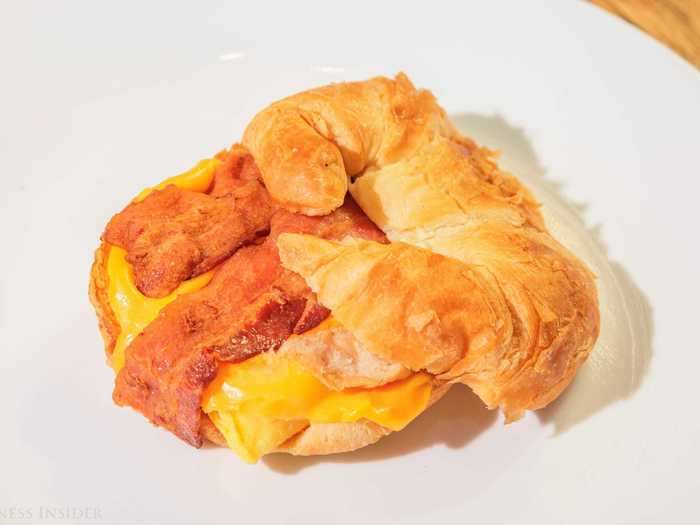
Today, Burger King's breakfast menu includes waffle sandwiches, multiple kinds of croissant-based breakfast sandwiches, pancakes, biscuit sandwiches, hash browns, and breakfast burritos.
Some menu items that have come and gone over the years include Burger King's Angus 'Shroom and Swiss steak burger and its Italian chicken sandwich.
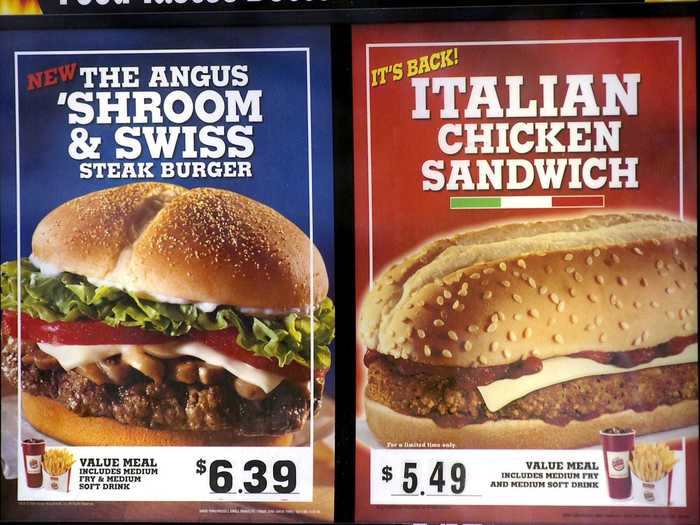
In 2005, Burger King launched its Angus 'Shroom and Swiss steak burger. The Italian chicken sandwich was an iteration of the original chicken sandwich topped with cheese and tomato sauce.
Burger King brought back a similar chicken parm sandwich in 2017, but the item has since been removed from the menu.
Now, spicy chicken sandwiches are among the most popular items on many fast-food menus.
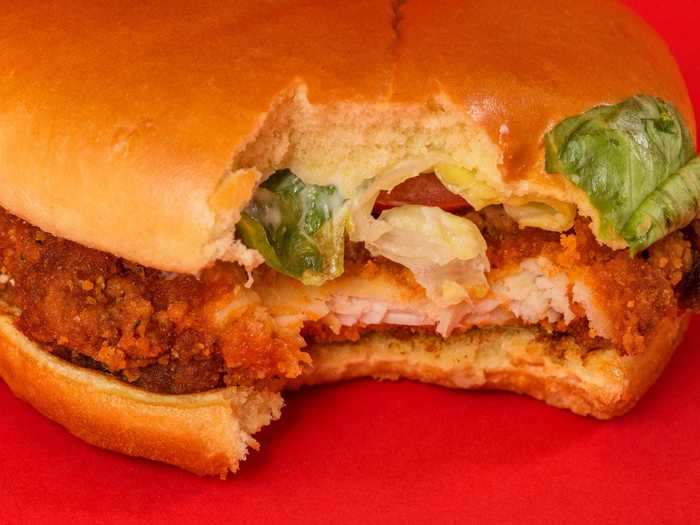
Burger King's spicy chicken sandwich arrived in 2018. Although it had yet to achieve the same level of fandom as the spicy chicken sandwiches from Chick-fil-A or Popeyes, it nevertheless holds its own.
In years past, the more meat the better.
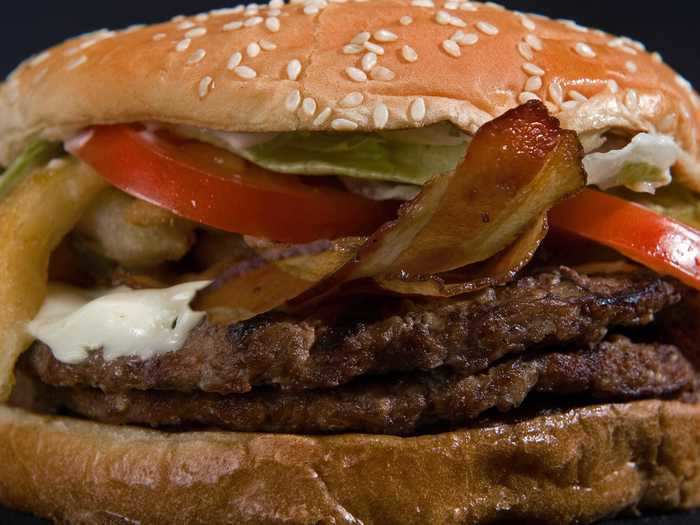
Burger King now only has one triple-stacked burger, but fan favorites like the Angry Triple Whopper are remembered fondly by Burger King fans. Last year, the chain brought back the Angry Whopper for a limited time before removing it from the menu again.
In 2020, plant-based burgers are on the rise.
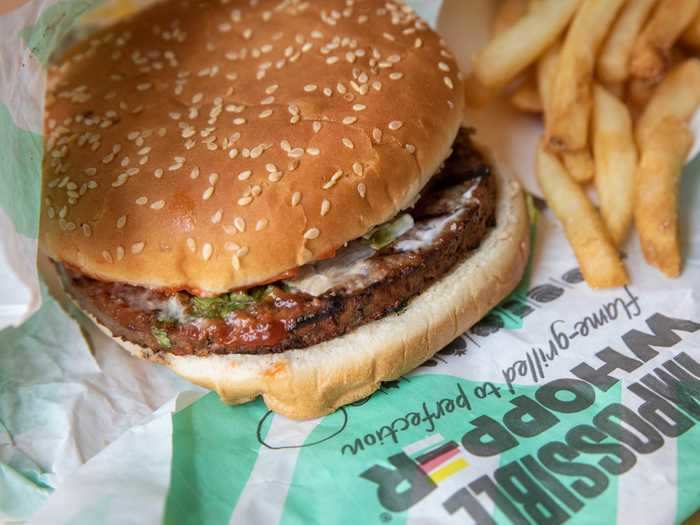
Burger King's Impossible Whopper was hugely successful for the chain. According to CNN, Burger King reported a 10% increase in sales following the launch of the Impossible Burger in 2019.
However, while the burger is plant-based, Burger King came under fire after a customer sued the company for serving the burger that's not actually 100% vegan.
Since the patties are cooked on the same grills as traditional meat burgers, they may come into contact with meat by-products. Burger King said it never advertised the burger as vegan or promised to cook them in a particular way.
Burger King was the first fast-food restaurant chain to offer dining rooms.
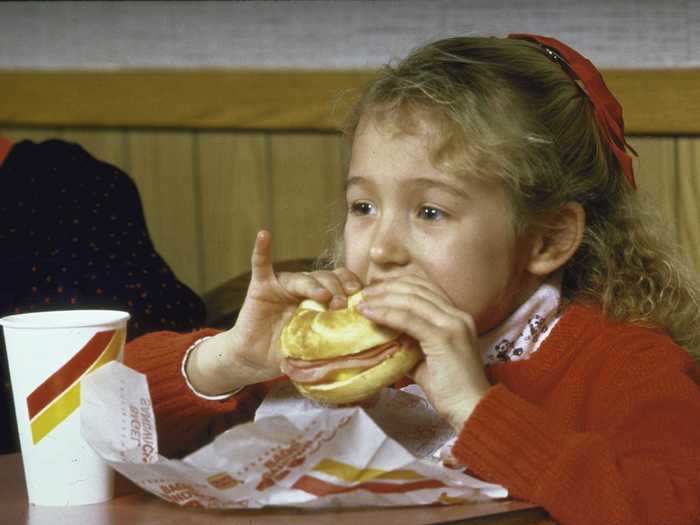
When Burger King added its plastic-furnished eating areas in the 1950s, its drive-thru windows were gradually phased out. However, in 1975, the drive-thru windows were reintroduced.
Burger King ushered in the Internet age when it introduced its own version of an internet cafe in the late 1990s.
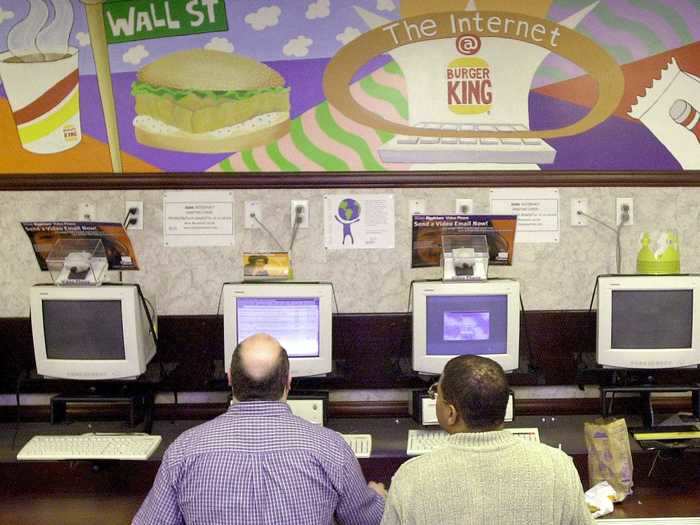
One Burger King restaurant, located on Broadway in New York City, allowed customers to surf the web at one of 20 PC computers if they purchased a meal.
Today, you won't find computers in Burger King restaurants.
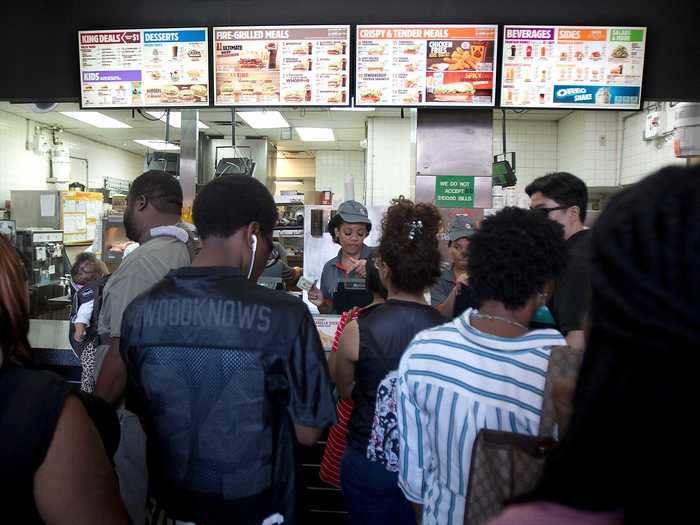
However, you might find that restaurants are cleaner and more technologically savvy as a result of the coronavirus pandemic.
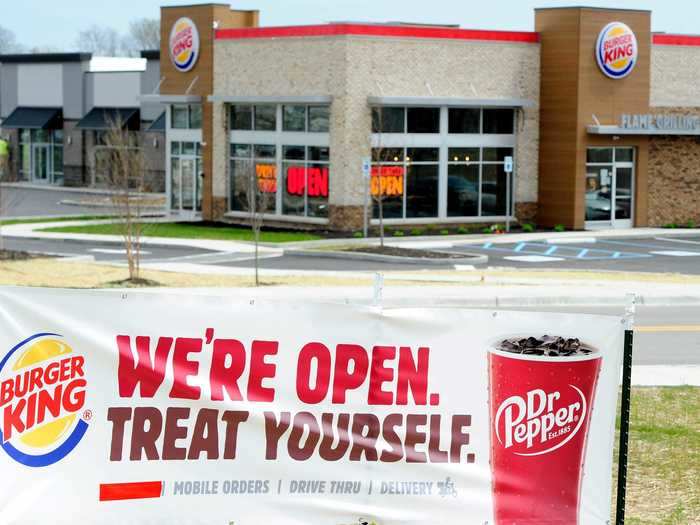
Although many restaurant dining rooms nationwide remain closed until further notice, some have begun to reopen with stricter cleaning procedures in place.
According to Burger King's website, the chain has already implemented handwashing, sanitization and cleaning rules, and it is committed to frequently disinfecting items such as pin-pads, door handles, tables, chairs, and all the surfaces in the chain's restaurants.
- Read more:
- I tried every single burger at Burger King and ranked them from worst to best
- I tried the signature burgers from 5 major fast-food chains, and the winner was obvious
- I ate similar meals at McDonald's and Burger King to see which would do it better, and the smaller chain beat out the bigger one by a hair
- We did a blind taste test of Burger King's new meatless Impossible Whopper, and were surprised to find it could pass off as the real thing
READ MORE ARTICLES ON
Popular Right Now
Popular Keywords
Advertisement